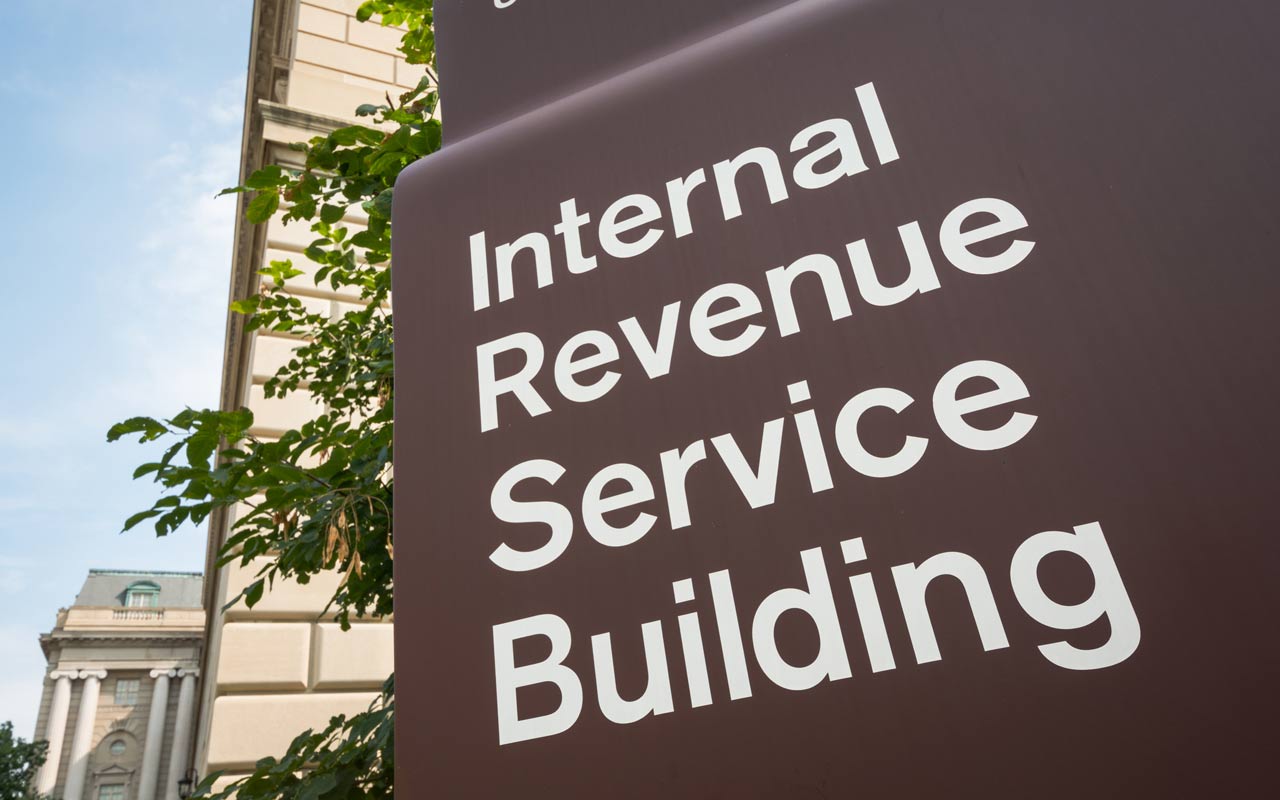New Tax Law: 8 Smart Tax Strategies for Retirees
The federal tax code is undergoing its first significant makeover in 30 years.


The federal tax code is undergoing its first significant makeover in 30 years. The new tax law, most of it effective just days after President Trump signed it right before Christmas, installs a bevy of changes, some sweeping, some tweaking.
Although every group of taxpayers will be affected, some may save a bundle, while others might find their tax cut a little thin -- some will even pay more.
Here, we outline changes in key areas that preretirees and retirees should pay particular attention to. Some provisions have been highlighted in news headlines, but some have flown under the radar. Most are scheduled to sunset by 2026, but whether that will happen is up to future Congresses.
A new tax law brings opportunities to implement tax-planning strategies to trim future tax bills. We’ll highlight eight big tax changes along with the related smart tax strategy for each. We encourage you to add them to your tax-trimming to-do list.

The Big Change: Lower Tax Rates
A change that all taxpayers will feel: Federal tax rates and the income thresholds for each bracket have dropped. “Lower tax rates are across the board at nearly all levels of income,” says Tim Steffen, director of advanced planning at Baird, an investment and financial planning firm. A single filer with $70,000 of taxable income in 2017 is in the 25% tax bracket, while in 2018 that same income falls in the 22% tax bracket, saving the taxpayer roughly $2,100. The seven tax brackets in 2018 will be 10%, 12%, 22%, 24%, 32%, 35% and 37%.
The alternative minimum tax still exists, but the exemption has been raised. For single filers, the exemption climbs from $54,300 to $70,300, and for joint filers, it rises from $84,500 to $109,400. How the exemption amount phases out has also been changed. The result: “Fewer people should be hit by AMT,” says Steffen.
The new law keeps the tax rates for long-term capital gains and qualified dividends of 0%, 15%, 20% or 23.8%. Previously, the tax bracket you fell into determined which rate you would pay on profits from assets you've owned for more than a year. Going forward, Congress wrote income thresholds into the law. For 2018, for instance, the 0% rate applies for individual taxpayers with taxable income up to $38,600 and for joint filers about $77,200. Short-term gains from assets held for a year or less are still taxed at ordinary income tax rates.
Those who are self-employed may qualify for a sweet tax break under the new law. If your business qualifies as a pass-through entity, such as a sole proprietorship or LLC, you may be able to shield 20% of that income from taxes.
- Go to the next slide to see the smart tax strategy for retirement.

The Smart Tax Strategy: Convert to a Better IRA
Convert money from a traditional IRA to a Roth IRA. Assuming your tax rate has dropped, you will pay less for a Roth conversion this year than you would have last year. If the tax changes expire as scheduled and tax rates rise, you could find yourself in a higher bracket down the road. You will pat yourself on the back for paying tax on the conversion at lower rates than future withdrawals from a traditional IRA would have faced. The sooner the money is in the Roth IRA, the sooner earnings will be tax-free rather than simply tax-deferred.

The Big Change: Larger Standard Deduction
Another big change is the doubling of the standard deduction. About 70% of all taxpayers have taken the standard deduction in the past, but this change is likely to tip the scale for millions of longtime itemizers. Some 30 million who itemize on their 2017 returns will likely be better off taking the standard deduction going forward.
For individuals, the standard deduction climbs to $12,000, from $6,500, for 2018. For married taxpayers filing jointly, the standard deduction rises to $24,000, from $13,000.
Seniors age 65 or older retain the extra standard deduction of $1,300 if married or $1,600 if single. For a married couple both 65 or older, their standard deduction climbs to $26,600. “That’s a big number,” says Steffen.
One trade-off for the increased standard deduction: the loss of the personal exemption, which was expected to be $4,150 for 2018. That loss trims the actual increase in tax savings from the boosted standard deduction, but many will still come out ahead with the standard deduction.
Those who still itemize face a mountain of changes in what’s deductible and what’s not. You can no longer deduct miscellaneous expenses, such as investment-management and tax-preparation fees. But you can still deduct some state and local taxes, mortgage and investment interest, and charitable contributions.
The medical deduction remains and, in fact, is temporarily sweeter. For 2017 and 2018, you can deduct unreimbursed medical expenses that exceed 7.5% of your adjusted gross income. The 10% threshold returns in 2019.

The Smart Tax Strategy: Bunch Deductions
Bunch deductions to take advantage of itemizing in one year and use the standard deduction the next. “It’s an old strategy that has greater meaning now,” says Thomas Alvare, senior lead advisor of JFS Wealth Advisors, in Doylestown, Pa. If you give $15,000 a year to charity, for instance, donate $30,000 in one year and itemize, and skip donations and take the standard deduction the next year.
Bunching deductions could offer an extra advantage if it pulls your taxable income to a level that reduces the tax rate on capital gains. If so, consider harvesting gains to take advantage of the lower rate, says Maria Bruno, senior investment analyst at the Vanguard Group.

The Big Change: State and Local Taxes
Many taxpayers in high-tax states scrambled at year-end 2017 to try to make use of the unlimited deduction for state and local income or sales taxes and property taxes. Starting in 2018, taxpayers are limited to an annual federal deduction of $10,000 for all state and local taxes. “There is a marriage penalty built in,” says Mark Luscombe, principal federal tax analyst for Wolters Kluwer Tax and Accounting, who notes that filing status doesn’t change the amount. Two singles living together can deduct $10,000 each in state and local taxes; a married couple is capped at $10,000, period. And there is no inflation adjustment, so the limited SALT deduction could become even more painful over time.
In low-tax states and localities, this limit may not be a big deal. But property owners in high-tax states, such as New York and California, and those with second homes are likely to suffer from the loss of the unlimited deduction. While many states and localities are trying to come up with ways to offset the loss, as of now, there isn’t much taxpayers can do to ease the pain if they want to continue to own the property.
Those who split time between states, though, might have a tax-saving opportunity. “Snowbirds may need to look more seriously at being a resident of a more attractive state,” says David Levi, senior managing director at CBIZ MHM.
Be sure to strictly follow state rules for full-time residency, though; high-tax states have become increasingly aggressive in preventing taxpayers from improperly claiming residency in a low-tax state.

The Smart Tax Strategy: Know State Tax Rates Before You Move
If you’ve been thinking of moving in retirement, take a good look at the state and local tax burden of the destinations you’re considering. You can delve into the tax-friendliness of states by using Kiplinger’s State-by-State Guide to Taxes on Retirees. There’s a good chance this change in federal tax law could prompt more retirees to consider relocating.

The Big Change: Deducting Mortgage Interest
The mortgage interest deduction gets squeezed under the new law. Previously, you could deduct interest on up to $1 million in mortgage debt incurred to buy or build a principal residence and second home, plus the interest on up to $100,000 of home equity debt used for almost any purpose.
The new law grandfathers in existing mortgages, but for debt incurred after December 14, 2017, the $1 million cap drops to $750,000. You can still deduct mortgage interest on a second home, but the lower limit applies to total debt used to buy, build or improve both homes. Steffen says if you have an existing mortgage of $500,000, but buy a new second home this year, you’ll be limited to deducting interest on $250,000 of the new mortgage.
The new law also abolishes the write-off for interest on home equity debt. And this crackdown applies to both old and new loans. But if you use a home equity line of credit to pay for “substantially improving” a home, you could still deduct interest related to the loan proceeds you used to cover those costs. If you use the money to buy a new car or take a big trip, though, you’re out of luck on deducting the interest.

The Smart Tax Strategy: Renovating? Save the Paperwork
If you plan to renovate your home to age in place, keep all your receipts and documentation of expenses. Besides being able to use those to potentially deduct home equity loan interest, you’ll also need them to prove that you increased the basis in your home. If you earn a substantial profit when you sell your home, that higher basis helps reduce any profit subject to tax.

The Big Change: Charitable Giving
Even though more taxpayers will take the standard deduction, there are still a couple of ways under the new law to maximize tax savings while doing good. And taxpayers who still itemize could actually benefit from a new, more generous limit on how much you can deduct, Luscombe notes. In the past, the deduction for cash gifts was capped at 50% of your adjusted gross income. The new law raises that to 60%.
If you regularly give to charity, consider bunching donations in one year to surpass the standard deduction amount so you can itemize for that year, while taking the standard deduction in other years. An easy way to do this is to set up a donor-advised fund, which lets you contribute a chunk of money in one tax year, but gift the money out whenever you like.
But generous seniors have another tax-advantaged route: the qualified charitable distribution. “QCDs will be a more valuable planning tool than in the past,” says Jamie Hopkins, co-director of the retirement income program at The American College of Financial Services. For most seniors, the QCD move will be the only way to get tax savings from charitable contributions, he says.
The law allows traditional IRA owners age 70-1/2 or older to directly transfer up to $100,000 from a traditional IRA to a qualified charity. The distribution can satisfy your required minimum distribution, killing two birds with one stone. Better yet, the income doesn’t show up in AGI, which could help rein in taxes on Social Security benefits or avoid Medicare premium surcharges.

The Smart Tax Strategy: The Charitable Giving Home Run
It’s so smart, we’ll say it again. The QCD move offers multiple benefits. Those eligible are “one group of people who can take charitable contributions off the top,” says Levi. “It’s kind of a home run.” If you are charitably inclined and you qualify for the move, it’s a tax-saving no-brainer.

The Big Change: Gifting to the Grandkids
The new law makes several changes that could affect how you give money to the grandchildren. First off, the law expands the use of 529 education savings plans. Besides college costs, you can now use up to $10,000 per year per child tax-free for private or parochial elementary and high school costs. Although there is no federal tax deduction for 529 contributions, many states offer a state tax break.
Taxpayers can now also roll 529 money into an ABLE account to help provide a financial cushion for people with special needs, while still maintaining their eligibility for government benefits.
For those who plan to gift grandkids assets that will throw off investment income, be aware that the new law changes the “kiddie tax” rules. Previously, unearned income above $2,100 received by a dependent child under age 19 (or age 24, if a full-time student) was taxed at the parents’ tax rate. Unearned income includes dividends, interest, capital gains and inherited IRA distributions.
Now, the parents’ tax rate doesn’t matter; the kiddie tax applies the trust tax rates, instead, and they rise much faster than individual rates. The top tax rate of 37% kicks in at $12,500 for trusts in 2018, for instance, but not until $600,000 for married couples filing jointly.


The Big Change: Estate Planning
While the estate tax wasn’t repealed, the federal estate-tax exemption doubled -- for 2018, the estate tax won’t apply until an estate exceeds $11.2 million. For couples, that means $22.4 million can pass tax-free to heirs. (Like most of the individual provisions in the new law, the higher exemption, which is inflation adjusted, is scheduled to sunset by 2026; if a future Congress doesn’t change the rules again, the tax-free amounts will be cut in half at that point.)
Experts worry that with the exemption so high people won’t do proper planning if there are no tax savings to be concerned about. “We see a big drop in estate planning when the exemption goes up,” says Hopkins. But any change in estate tax law should serve as a good reminder to review wills, trusts and other estate-planning documents to make sure they still meet your wishes.

The Smart Tax Strategy: Leave Capital Assets to Heirs
The rule that steps up the tax basis of inherited assets remains under the new law. As in the past, consider passing capital assets such as appreciated stock, mutual fund shares and real estate to heirs. The heirs’ basis will be the value of the assets on the date you die, making all prior appreciation tax-free.

The Big Change: Retirement Plans
While some lawmakers proposed a major overhaul to the rules for retirement accounts, in the end those scary headlines turned out to be a false alarm. “The big thing for saving for retirement is that nothing changed,” says Steffen. You can still stash $18,500 for 2018 into a 401(k), with a $6,000 catch-up contribution for those age 50 and older. And you can put up to $5,500 into an IRA, with an extra $1,000 catch-up contribution for those 50 and older.
But taxpayers did lose the ability to recharacterize Roth conversions. Under old law, you could reverse a conversion until mid October of the following year and wipe out the tax bill you paid to move the money from a traditional IRA to a Roth.
Under the new law, you’re stuck with the move -- and the tax liability. Roth conversions can still make plenty of sense, but you'll need to be more careful about when and how much money you convert. “It adds a little anxiety to the decision,” says Nathan Rigney, lead tax research analyst at H&R Block's Tax Institute.
You might want to hold off converting until you have a better sense of your tax liability for the year. “These decisions will have to occur later, into November or December,” says Hopkins.
Note, you can still recharacterize Roth contributions. If your income passes the thresholds to be eligible to contribute to a Roth, the new law lets you undo the Roth contribution and put the money into a traditional IRA instead.
The new law provides some relief for workers who borrow from their 401(k) plans. Borrowers who leave their company can now wait until the tax filing deadline of the year they left the job to put the unpaid balance into an IRA. That gives these borrowers more time to avoid having the loan balance turn into a taxable distribution.

The Smart Tax Strategy: Recharacterize 2017 Roth Conversions
While you can no longer reverse a Roth conversion done on or after January 1, 2018, the IRS confirmed in mid January that you can still recharacterize a 2017 Roth conversion by October 15, 2018. If the market falls and your Roth goes down in value, or your tax rate has dropped significantly, consider recharacterizing the Roth by the October deadline.

More to Come from the IRS
With so many changes to so many areas of the federal tax code, expect a slew of regulations from the IRS to explain things and potential technical corrections by Congress to fix unintended consequences. “There are always gray areas that are created, and aggressive accountants will take advantage of it,” says Alvare. “Things get clarified over time.” Stay tuned: As the IRS clears up sticky issues with guidance, we’ll keep you up to date.
Profit and prosper with the best of Kiplinger's advice on investing, taxes, retirement, personal finance and much more. Delivered daily. Enter your email in the box and click Sign Me Up.

-
 A Contrarian Approach Pays Off for This Bond Fund
A Contrarian Approach Pays Off for This Bond FundThe Dodge & Cox Income Fund has outperformed in 2025 thanks to its managers' fearless approach.
-
 How AI Is Changing the Way Americans Spend on Live Events
How AI Is Changing the Way Americans Spend on Live EventsAI bots are reshaping ticket prices, resale markets and how fans shop. Here's what it means for your wallet and how to get the best deals on concerts, sports and shows.
-
 7 Outrageous Ways Retirees Can Invest Their Money in 2026
7 Outrageous Ways Retirees Can Invest Their Money in 2026Stocks and bonds aren't the only ways to invest your retirement "fun money."
-
 What to Do With Your Tax Refund: 6 Ways to Bring Growth
What to Do With Your Tax Refund: 6 Ways to Bring GrowthUse your 2024 tax refund to boost short-term or long-term financial goals by putting it in one of these six places.
-
 What Does Medicare Not Cover? Eight Things You Should Know
What Does Medicare Not Cover? Eight Things You Should KnowMedicare Part A and Part B leave gaps in your healthcare coverage. But Medicare Advantage has problems, too.
-
 12 Great Places to Retire in the Midwest
12 Great Places to Retire in the MidwestPlaces to live Here are our retirement picks in the 12 midwestern states.
-
 15 Cheapest Small Towns to Live In
15 Cheapest Small Towns to Live InThe cheapest small towns might not be for everyone, but their charms can make them the best places to live for plenty of folks.
-
 15 Reasons You'll Regret an RV in Retirement
15 Reasons You'll Regret an RV in RetirementMaking Your Money Last Here's why you might regret an RV in retirement. RV-savvy retirees talk about the downsides of spending retirement in a motorhome, travel trailer, fifth wheel, or other recreational vehicle.
-
 The 24 Cheapest Places To Retire in the US
The 24 Cheapest Places To Retire in the USWhen you're trying to balance a fixed income with an enjoyable retirement, the cost of living is a crucial factor to consider. Is your city the best?
-
 The Six Best Places to Retire in New England
The Six Best Places to Retire in New Englandplaces to live Thinking about a move to New England for retirement? Here are the best places to land for quality of life, affordability and other criteria.
-
 Estate Planning Checklist: 13 Smart Moves
Estate Planning Checklist: 13 Smart Movesretirement Follow this estate planning checklist for you (and your heirs) to hold on to more of your hard-earned money.
